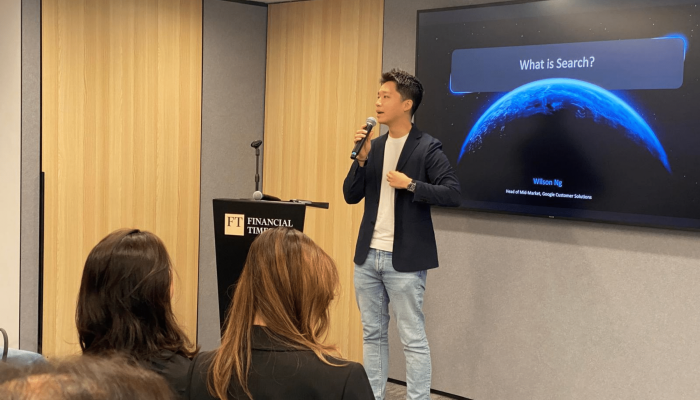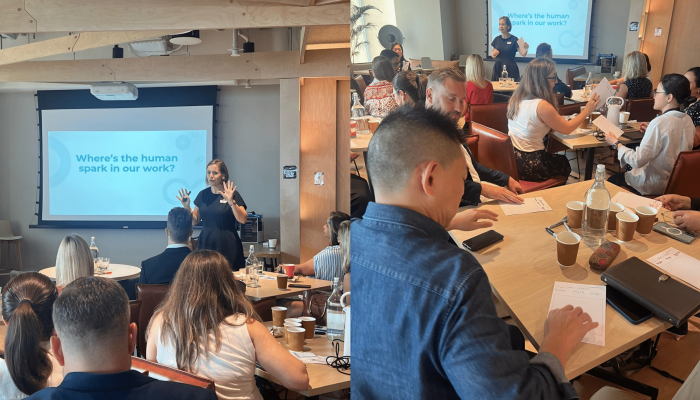Hype is a machine for doing one thing – pumping up expectations. The AI hype machine has been inescapable for the past two years, rapidly inflating expectations for what the new breed of generative AI models are capable of.
There are countless headlines, podcasts, LinkedIn posts and conference speaking slots extolling the promise of AI to transform how marketing and comms professionals work. It’s all driven high expectations around the capacity of current generative AI tools to significantly boost everything from speed to market to staff productivity to personalisation.
In fact, McKinsey research found that nine in 10 senior executives in global sales and marketing firms thought their firms should be using generative AI often or almost always, despite only two in 10 feeling like they are currently operating that way. But for marketing professionals operating outside of the west – and the US in particular – the reality is a lot more complicated. Why?
Bias
The vast majority of generative AI tools in popular use simply don’t understand Asian cultures and consumers anywhere near as well as they understand Western ones. And it means the expectations that are powering the global conversations about the role generative AI is ready to play in marketing and comms in Asian markets need to be shifted.
Bias in the machine
The basis of the issue is straightforward. Most generative AI models are trained on publicly available data online and – despite being spoken by just 16% of the earth’s population – English is the language of choice for almost two thirds of websites. While OpenAI is shy about revealing too much about its training data, we know that ChatGPT3, for instance, was trained on a data set that was 93% English language.
And while many AI tools are rapidly improving in their ability to perform basic translation into many Asian languages, they remain a long way off understanding local context, character and culture anywhere near as well as they do for wealthy English-speaking nations.
For organisations with US-based head offices and Asian operations in particular, this is creating a major expectations gap. Marketing execs using generative AI in the West are getting a false sense of confidence in the tools’ applicability to non-western markets.
So much about doing business in Asia is about relationships and the context in which they take place. Negotiating a deal in India is very different to negotiating a deal in Japan, for example. Filipino tastes and product preferences aren’t the same as those in Thailand. With great diversity of languages and cultures, and differing rates of economic development and technological adoption, Asia is not a region in which “one size fits all” marketing and communication approaches tend to work.
Generative AI’s relative ignorance of non-Western world is increasingly well recognised, and efforts are being made to remedy the issue. In February, the Singaporean government announced the SEA-LION project, which aims to bring together data in 11 Asian languages to create a generative AI model that feels a lot more at home here. But even this noble project is being trained on a dataset that is almost two-thirds English language. There are other efforts underway too, but limits as well. For example, despite being spoken by more than 100 million people, Vietnamese is classified as a ‘low-resource’ language, meaning the amount of written content available online to train AI models is low.
Working with what you’ve got
And this, at first glance, would seem to make generative AI’s struggles with nuance and context, especially in Asia where it lacks data to be trained on, major constraints on its usefulness in communicating. Does that mean we can rule out using generative AI in communications and leave it to the code writers, data analysts and number crunchers? Not at all. But what it does mean is we have to understand where AI is most effectively applied. One thing generative AI does proficiently is organising and formatting information – something that often doesn’t depend on cultural context to be done well.
The more defined the data or information set that AI has to work with, the better the result, which makes AI extremely useful when you are dealing with information that already lives inside your organisation. For marketing and communications professionals, making use of this ability can make it easier to get up to speed on product or technical details, analyse campaign results, or quickly analyse existing content. It would be far more efficient, for example, to ask AI to summarise and analyse the existing content on your organisation’s YouTube channel, based on transcripts, than to first sit through it all yourself making notes for a report. In short, you can use AI to get to a deeper understanding faster, allowing you to make decisions and act with data-driven insight faster, whether you’re dealing with audiences, messages, products or campaign materials.
Iterate faster
Your product information, mission statements, tone of voice documentation, previous campaigns and many other internal assets can all be used to train AI to understand how your organisation likes to say things. Functionality like Open AI’s Custom GPTs make it easier than ever to create workflows that are trained on your organisation’s data and way of doing things. This approach can be useful in generating new iterations of messaging based on well-established patterns. For example, we have found that generating new messages based on existing themes to refresh social media campaigns is something AI can assist with, allowing staff to work on higher-value projects.
“Assist” is the key word here. AI can generate messaging that meets basic requirements, but our experience is that it is not yet able to incorporate the context and understanding that lifts messaging from functional to insightful and engaging. For that, we still need people, and their knowledge, experiences and perspectives.
The power of perspective
No one knows a business like its own people, but sometimes a fresh perspective can be a catalyst for rejuvenation or a renewed approach. Whether generative AI is able to supply that fresh perspective is currently open to question. As good as AI is at organising and analysing information, genuine insight is still far more likely to come from knowledgeable people that are well-informed about your business and the context it operates in.
There is no doubt generative AI models will improve their understanding of Asian cultures and contexts. But there’s also little doubt – given the current importance of training data volume – that this understanding will continue to lag behind its understanding of western culture. For the time being then, as communications professionals, we’re better served putting AI to work for tasks at which it will excel, rather than forcing it into service to do things it’s not yet equipped to do.
Generative AI’s potential in Asia remains incredibly bright, but the limitations created by current approaches to data means marketers in Asian markets must continue to develop their own approaches to using generative AI, playing to its strengths and understanding and working around sidestepping its weaknesses.
Gus Wick Business Director ASEAN Mahlab Singapore.
Published on 23 July 2024



